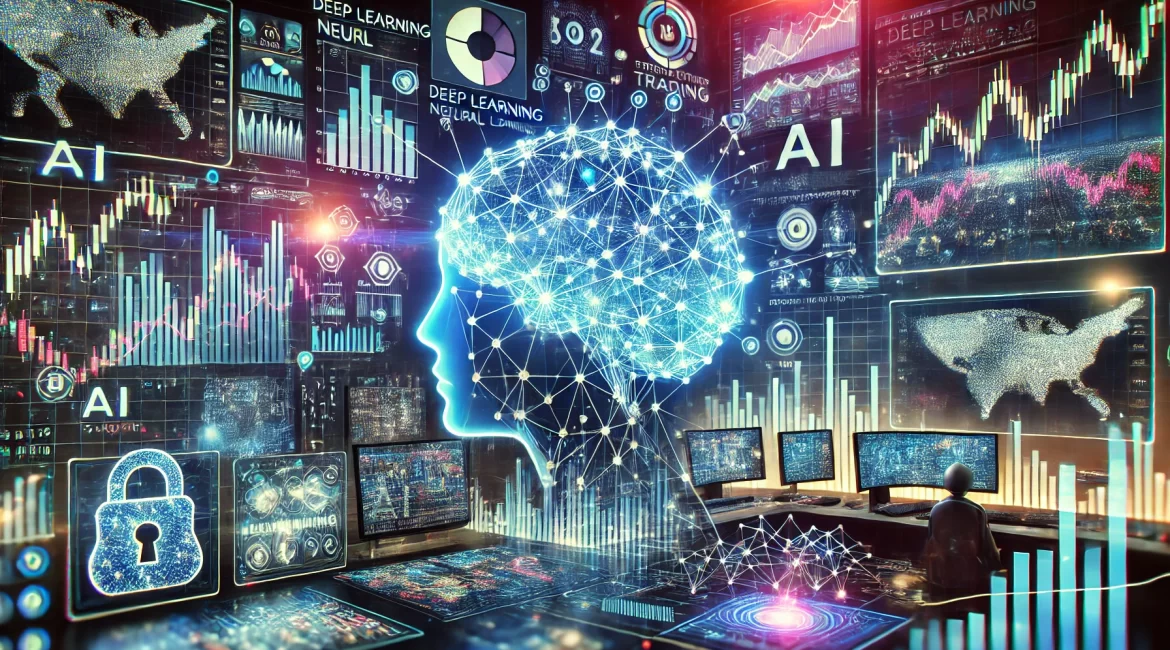Introduction
Algorithmic trading has evolved significantly over the past decade, with artificial intelligence (AI) and machine learning (ML) now playing a pivotal role in shaping market strategies. These technologies are revolutionizing trading by enhancing predictive accuracy, automating decision-making, and optimizing execution strategies. As private investment firms seek to gain a competitive edge, understanding and leveraging AI-driven advancements in algorithmic trading has become crucial.
The Rise of AI in Algorithmic Trading
AI and ML have introduced sophisticated tools capable of analyzing vast datasets, identifying complex patterns, and executing trades with precision. Traditional quantitative models relied heavily on static rule-based systems, whereas AI-driven models dynamically learn from historical and real-time data, adapting to evolving market conditions. These advancements have led to:
- Enhanced Pattern Recognition: AI algorithms process high-frequency data to detect emerging trends and anomalies faster than human traders.
- Predictive Analytics: Machine learning models forecast price movements based on macroeconomic indicators, order book dynamics, and sentiment analysis.
- Risk Management Optimization: AI-driven models assess risk factors in real-time, mitigating losses and adjusting portfolio exposure accordingly.
Key Technologies Driving AI-Enabled Trading
The implementation of AI in algorithmic trading is supported by several groundbreaking technologies:
1. Deep Learning and Neural Networks
Deep learning architectures, including convolutional and recurrent neural networks, enhance trading strategies by recognizing intricate patterns in time-series data. These models are particularly useful for:
- Predicting price movements with high accuracy.
- Detecting market inefficiencies.
- Enhancing execution algorithms by adapting to order flow dynamics.
2. Natural Language Processing (NLP)
NLP-powered trading systems extract actionable insights from unstructured text sources, including:
- Earnings reports and financial statements.
- Social media sentiment and news articles.
- Central bank communications and regulatory filings.
By integrating NLP, trading firms can react to market-moving news faster than ever before.
3. Reinforcement Learning (RL)
Reinforcement learning, a subset of ML, optimizes trading strategies through continuous learning and simulation. RL models:
- Adapt to different market conditions without explicit programming.
- Improve portfolio allocation strategies dynamically.
- Optimize order execution by learning from past trades.
4. Quantum Computing in Trading
Though still in its nascent stage, quantum computing has the potential to revolutionize algorithmic trading by:
- Solving complex optimization problems at an unprecedented speed.
- Enhancing Monte Carlo simulations for risk assessment.
- Enabling more efficient arbitrage strategies.
Evolving Market Trends in AI-Driven Trading
The growing adoption of AI in trading has given rise to several market trends:
- AI-Powered Hedge Funds: Investment firms increasingly rely on AI-generated insights to construct and rebalance portfolios.
- Regulatory Adaptation: Regulators are implementing AI-powered surveillance tools to detect market manipulation and fraudulent activities.
- Decentralized Finance (DeFi) and Smart Contracts: AI-powered algorithmic trading is expanding into DeFi, leveraging blockchain technology for transparent and automated trading execution.
- Edge Computing and Low-Latency Execution: AI models are now being deployed closer to the data source (edge computing) to reduce latency and enhance execution speed.
Challenges and Considerations
Despite its transformative potential, AI-driven algorithmic trading presents challenges:
- Data Quality and Bias: Poor data quality or biased datasets can lead to inaccurate predictions and flawed trading strategies.
- Model Interpretability: Many AI models, particularly deep learning systems, operate as “black boxes,” making it difficult to interpret decision-making processes.
- Regulatory Compliance: Evolving regulations require firms to ensure AI-driven trading adheres to transparency and fairness standards.
- Cybersecurity Risks: Increased reliance on AI systems necessitates robust cybersecurity measures to prevent malicious attacks.
Future Outlook
The future of AI in algorithmic trading is poised for continuous evolution. Emerging advancements in explainable AI (XAI), hybrid AI-human collaboration, and federated learning will enhance model transparency and trading efficiency. Additionally, advancements in quantum computing and real-time data processing will further refine AI-driven strategies, unlocking new opportunities for private investment firms.
Conclusion
AI and machine learning are fundamentally reshaping algorithmic trading by enhancing predictive accuracy, automating decision-making, and optimizing trade execution. As financial markets become increasingly data-driven, private investment firms must stay ahead by integrating AI-powered strategies into their trading operations. By leveraging cutting-edge technologies such as deep learning, NLP, and reinforcement learning, firms can unlock new efficiencies and gain a sustainable competitive advantage in the ever-evolving world of algorithmic trading.

